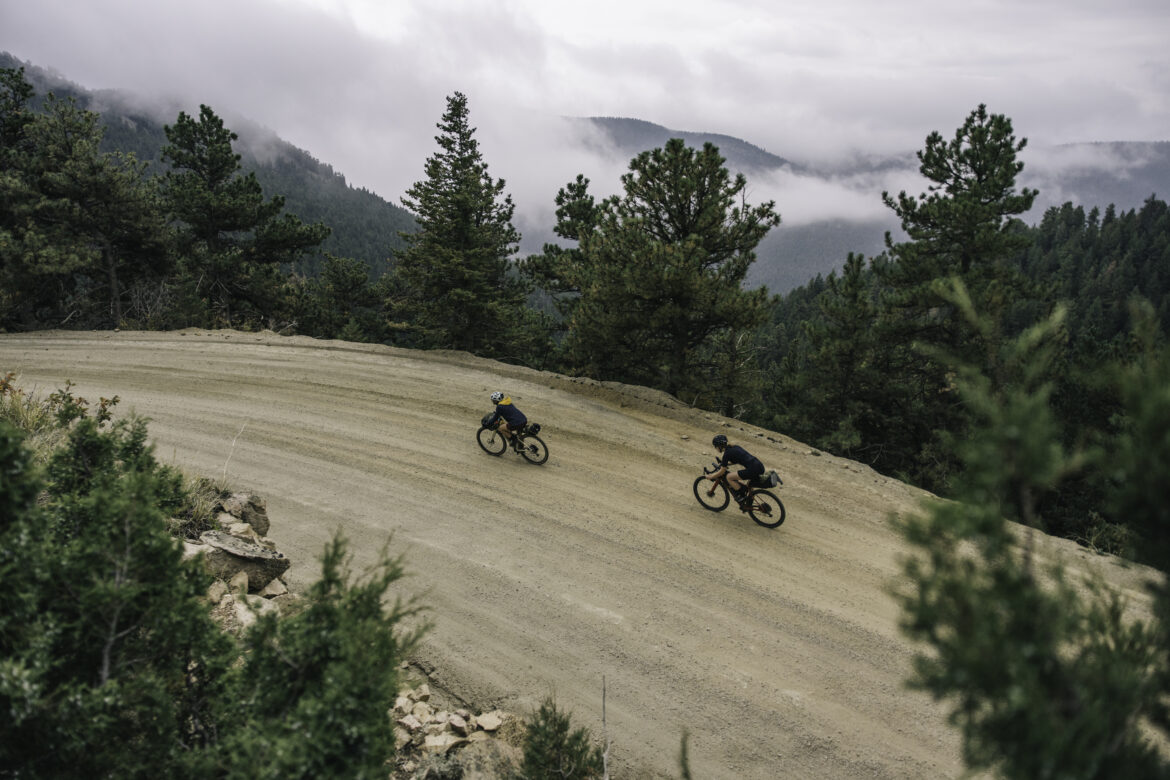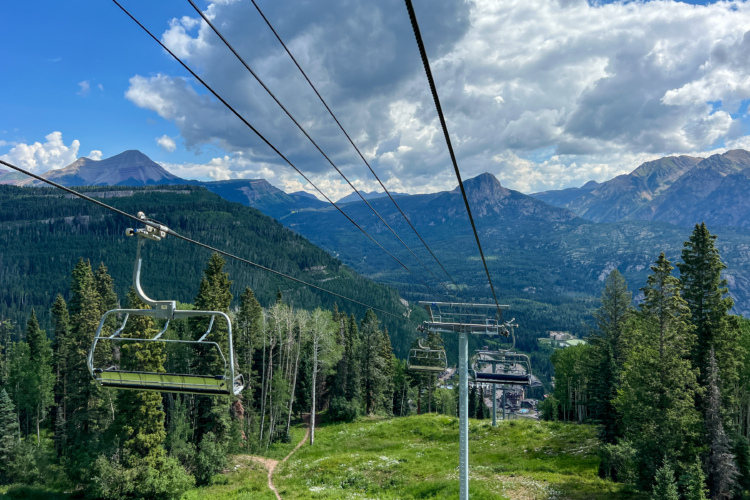
Whether you get your kicks from riding up, down, or both, I think we can all agree that few things beat the feeling you get from riding some sweet singletrack. And for all but a lucky few, the winter season seriously cuts into our time out on the trails. Depending on where you reside, this time of year can present some serious limitations to your riding and fitness. Less daylight, cold temps, ice, and snow can be the enemy of fitness, skills, and fun, but they don’t have to be. If you’re really looking to up your mountain biking game, a few months of off-the-bike training and activities during winter can be more beneficial to your pedaling prowess than you might think.
Just like there are many types of riders, there is no “one- size- fits- all” approach to winter time training, yet there are several actions that we can take can be taken to get the most out of the your off-season.
To keep your off-season progressing and to help stay focused, an important first step is goal setting. Even if you have no plans to compete come the following spring or summer, identifying some short-term and long-term goals can help determine what your winter training strategy should look like.
Setting Goals: Narrow it down

Be realistic with your goal setting; keep the number of goals to no more than five, and prioritize the ones you’ve laid out. Make sure to choose goals that are easily quantifiable. A good quantifiable goal can be checked off a list, while a non-quantifiable goal is something more arbitrary, such as “get stronger,” or “become faster.”
The entire reason for training is to get stronger and faster, but goal setting helps pinpoint the action one takes in order to improve and measure performance. For example, if you already know that you’d like to increase your muscular and core strength for hairy and techy downhill runs, then a good quantifiable goal would be to make it to the gym at least three times a week in order to strengthen the upper and lower body muscles required to send it down the mountain.
If your main priority is keeping up with your riding buddies on long climbs as soon as the snow thaws, then a reasonable quantifiable goal would be to incorporate some type of aerobic exercise into your winter training plan at least four days a week. Sure, there’s much more science to each of these goals, however without singling out goals themselves, it’s difficult and sometimes impossible to apply the science required to achieve them.
Once you’ve listed and prioritized your goals, the next step is to choose the activities that will primarily replace your mountain biking. If you work with a coach, then this process can be fairly easy and straightforward, as he or she can outline and write a training schedule, and all you have to do is put in the work. However, if you’re going it alone, then you might have to get creative and consult the world wide web for a training plan that best fits your needs for attaining your goals.
As a professional coach with over a decade of experience, I’ve worked with athletes from all over the globe. Although there seems to be an infinite number of cross-training activities that we can partake in during the off-season, there is a finite number of areas that we can actually improve upon when it comes to mountain biking. Everything boils down to aerobic fitness, muscular strength, and mental fortitude.
Aerobic Fitness: Don’t be afraid to go hard
When it comes to aerobic conditioning, there is plenty of science that shows a regimen of aerobic exercise at least four times a week will help maintain and even improve some areas of an athlete’s fitness. In the endurance sports coaching world, there are different opinions about the ratio of low intensity to high intensity aerobic training, especially in the winter off-season. If your goals include actual spring and summer races, then a classic sports periodization plan where the winter is spent building an aerobic foundation that will help sustain a higher intensity fitness peak into the summer time is widely advised.
Hiking, running, cross country skiing, snow shoeing, rowing and even indoor lap swimming are all great aerobic activities and alternatives to spending your winter riding the indoor turbo trainer. Not only do these sports stimulate your aerobic system, they can also put a greater emphasis on different muscle groups and motor skills that mountain biking tends to lack or avoid.
If you are a beginner, or new to any of these alternative sports, then I’d recommend easing into them from a higher intensity standpoint. Remember, winter is technically your off-season, especially if your goals are more long-term and set for spring and summer. There’s no need to go set any personal records running or skiing when the entire purpose of these activities is to supplement your mountain biking. Taking running to excess, before your body has adapted to it, whether it be in duration or intensity, can lead to acute or chronic injuries that may negatively impact your riding come spring time. Start slow, work on your form in these sports, and enjoy the learning process. Focusing on good form in these activities promotes longevity so you can successfully turn to these cross-training alternatives every winter.
In the road cycling world, there’s an old school of thought that says high intensity workouts should be avoided in the off-season or winter time. If you’re racing Grand Tours or nearly every weekend in spring, summer and fall, then this makes sense. The reality for most of us is that we’re not racing or riding at such high intensities throughout the year. We get plenty of recovery and don’t require a long off-season, or a period of exclusively low-intensity training. The average mountain biker can benefit from revving the engine, even in the off-season. That means if you do find time to ride outdoors occasionally, or you do decide to sweat it out on a turbo trainer or stationary bike, feel free to put in some HIIT (High-Intensity Interval Training). Those efforts will only make your return to outdoor riding more successful and enjoyable, plus they’re better done on a bike than in your running shoes or in the pool.
Muscular Strength: Don’t forget yoga
Just as cross-training in a different endurance sport will help maintain some mountain biking fitness in the winter time, so will strength training. If most of your year is spent outdoors on the trails pushing pedals, then it’s likely the rest of your skeletal muscles can use a tune-up and a bit more balance. Granted, the sheer explosive power that is required to ride up, over, and down techy singletrack cannot be understated, and should be a staple of your off-season training plan, but don’t make every day leg day. There’s a whole lot more to going fast and far on a mountain bike than just doing squats and lunges. A couple days a week in the gym, or doing at-home strength and resistance training with a focus on legs is enough to improve your cycling strength and performance.
You should also be dedicating at least two days a week to core exercises such as planks and push-ups, and upper body exercises such as chest press and lat pull-downs. Plyometric exercises like box jumps and burpees will also help build the explosive muscle power that is needed while riding up ledges and short, punchy uphills, as well as accelerating out of corners. And don’t underestimate the power of yoga when it comes to improving your muscular strength. Two to three days a week of yoga will not only improve your core strength, it will also improve your flexibility, which has been shown to help prevent chronic injuries.
In addition, the stronger and more flexible your back, hip flexors, and chain of muscles down the front and backside of your core, the better, quicker, and longer you can slice through technical uphill and downhill trails without getting fatigued. There can also be a mental component to yoga that some athletes find enhances their riding. Mental strength cannot be overstated when it comes to mountain biking.
Mental Fortitude: It’s as easy as reading

As a coach I talk to athletes every day about the physical aspects of their training and racing schedule. We analyze heart rate and power data, we look at race course elevation profiles, we talk about nutrition plans, and we geek out over race strategies and tire selection, yet the one thing that seems to always take a back seat is the talk of mental toughness. While physical fitness and bike skills can be somewhat easily measured, no one likes to admit that their mental game may be the missing piece to their puzzle. During the winter months when daylight hours are slim and time on the bike is limited, there’s no better time to work on your mental fortitude.
Whether it’s through reading, listening to podcasts, or some other alternative such as working with an expert in the field, overcoming mental barriers in sport is no longer something to be ashamed of or avoided. One of my personal favorites in this field is the book, “How Bad Do You Want It?: Mastering the Psychology of Mind over Muscle” by Matt Fitzgerald. I’ve listened to the audiobook three times in the last few years and I can always tell my mental toughness is better after I’ve listened to it, and the same can be said for my clients that have read it.
The difference between you and your stiffest competitor may not be about power-to-weight or physical endurance at all. Often times it’s what you tell yourself, so why spend endless hours riding and thousands of dollars on bicycles, components, nutrition, gym memberships, and the like if one of your biggest limiters is inside your helmet. Just as you work to strengthen your body, you should also seek out the tools that can help you strengthen your mind, and build confidence on the bike. And just like your physical fitness, mental fortitude and strength is something that needs to be trained and maintained throughout the year.
It’s not just a winter activity, but it’s definitely nice to cozy up next to a warm fire and prepare yourself mentally for time off the bike.













1 Comments
Dec 4, 2022